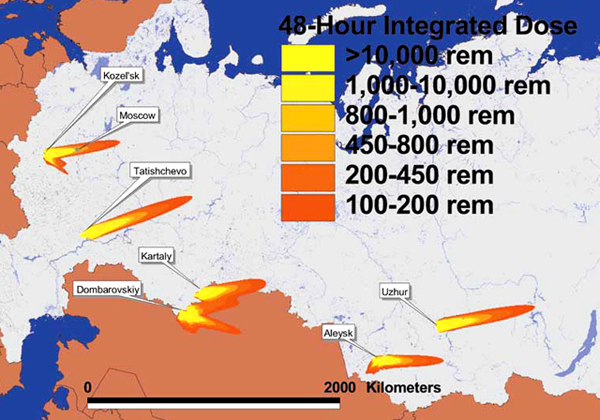
The Natural Resources Defense Council produced this chart for the major study of the SIOP that it published in 2001. The chart shows the radiation hazards produced by the exercise of a SIOP strike on Russian ICBM fields. The calculations produced by NRDC used wind patterns typical for June and assumed a weapons fission fraction of 50 percent (the fraction of the weapon yield produced by nuclear fission). The NRDC also "integrated" the radiation dose to an unprotected population by taking into account radiation released by the initial burst as well as by fallout during the two days after the detonation. Thus, residents of Moscow could experience doses up to1,000 rem (radiation equivalent man). (Individuals absorbing a 100 rem dose can begin to experience radiation sickness.) Using those parameters, the NRDC calculated 19.7 million casualties of which 16 million were fatalities. "Over 175,000 square kilometers would be contaminated by fallout to such an extent that unsheltered people would have a fifty percent chance of dying [from] radiation sickness." (See table 4.4, Natural Resources Defense Council, The U.S. Nuclear War Plan: A Time for Change (2001) at http://www.nrdc.org/nuclear/warplan/index.asp)